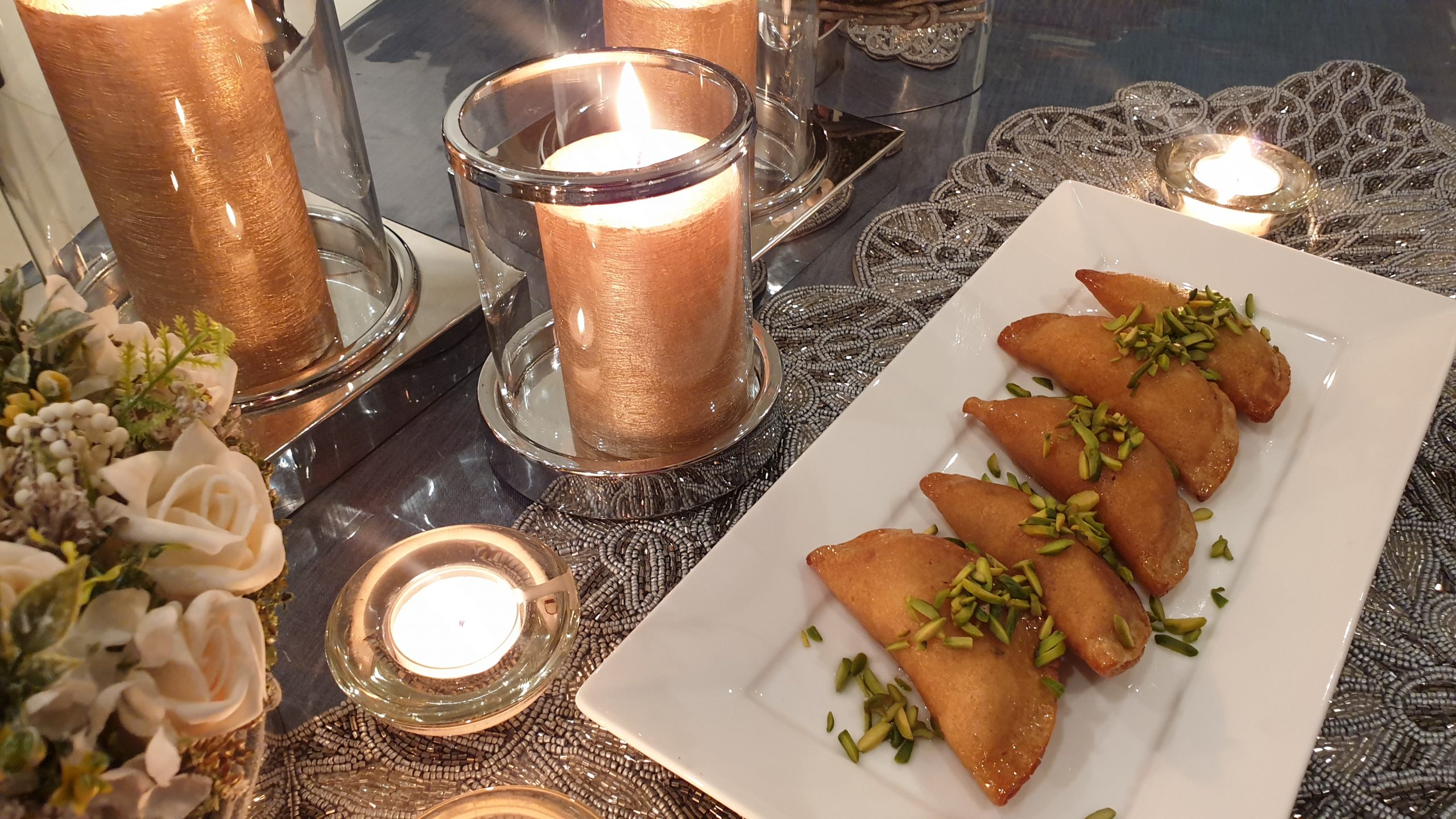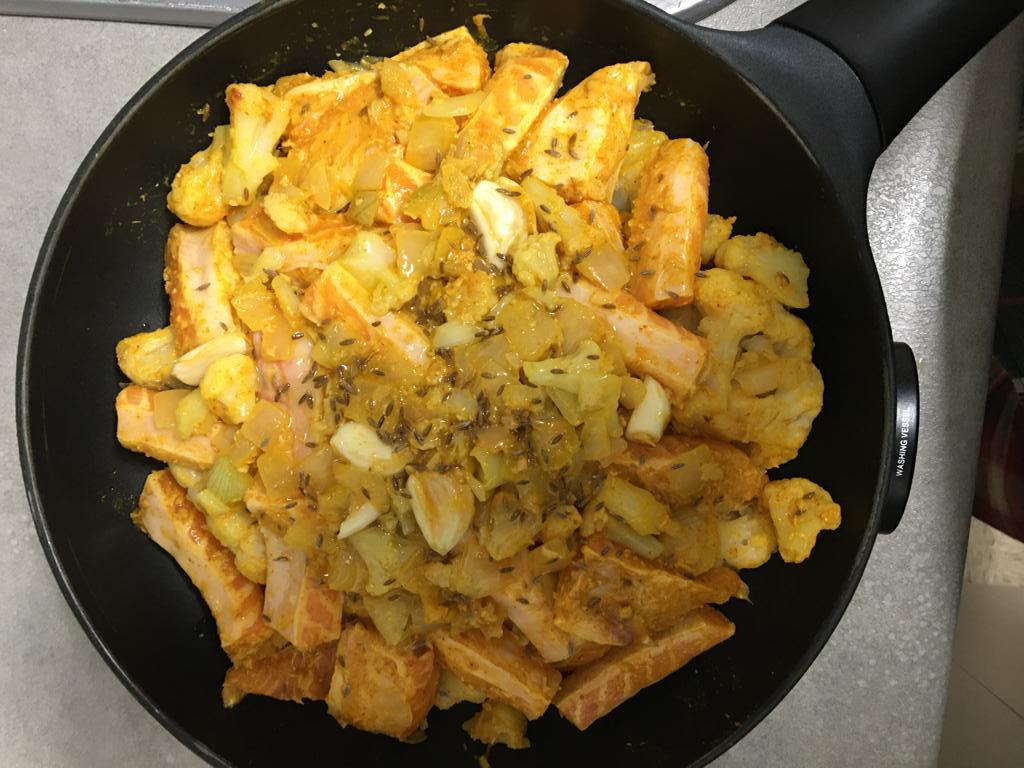Kiran’s Dahi Baray
 Pakistan
Pakistan 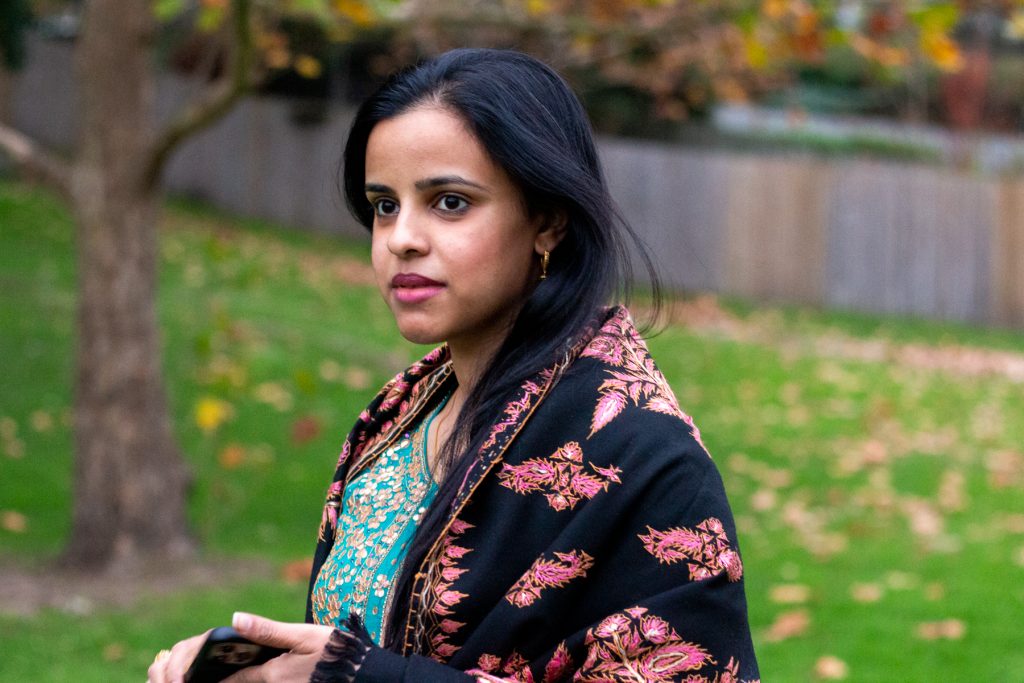
Growing up in Pakistan, when it was time to break our fast, we always had at least three or four items on our Iftar table, with my mother switching items on a daily basis. One day it would be (potato samosas) and the next day keema samosas (lamb samosas). One day it would be fruit chaat, and the next day it would be just chopped up fresh fruit. One day it would be aloo pakoras (potato fritters), and the next day pyaaz pakoras (onion pakoras). The one constant, and one of my favourite Iftar recipes, is dahi baray, lentil fritters specifically the ones made with mash ki daal that my mother makes.
Alongside the Iftar speciality items, there were always dates on the table and Rooh Afza, commonly known as laal sherbat, a refreshing and fragrant cordial-based drink and mango squash. After Iftar, we would all get up for prayers, and then sit down to dinner afterwards. Dinner would be on the light side, since the Iftar items themselves could be quite heavy.
Like me, my parents were born and grew up in Pakistan. My grandparents however were born in India. They hail from the North of India from the state of Uttar Pradesh (called UP for short) and when Indian partition happened in 1947 they migrated to Pakistan bringing their cultures, traditions and of course recipes with them. This is why a lot of the food that I grew up eating, and continue cooking in my home, is similar to the food that can be found in Indian cities with sizeable Muslim populations such as of Delhi, Agra, Aligarh and Lucknow. During Ramadan, you will see fruit chaat, dahi baray chaat, pakoras and samosas in India as well as in Pakistan. The traditional recipes are quite similar even now 75 years after partition.
This recipe of dahi baray is one such recipe. In India, it is often called dahi bhallay or dahi vada with the white lentils that are used to make it called mash ki daal in Urdu, and urad daal in Hindi. The lentils are soaked overnight then ground into a paste, after which the batter is fried to make fritters (known as baray). I remember my mother shaping the batter into a round on her hand on a muslin cloth, and then carefully dropping it upside down in the hot oil to make perfectly circular dahi baray. I personally have never been able to master that skill of bringing my hand so close to the oil, and not burning myself. I just use a spoon to dollop the batter into the hot oil.
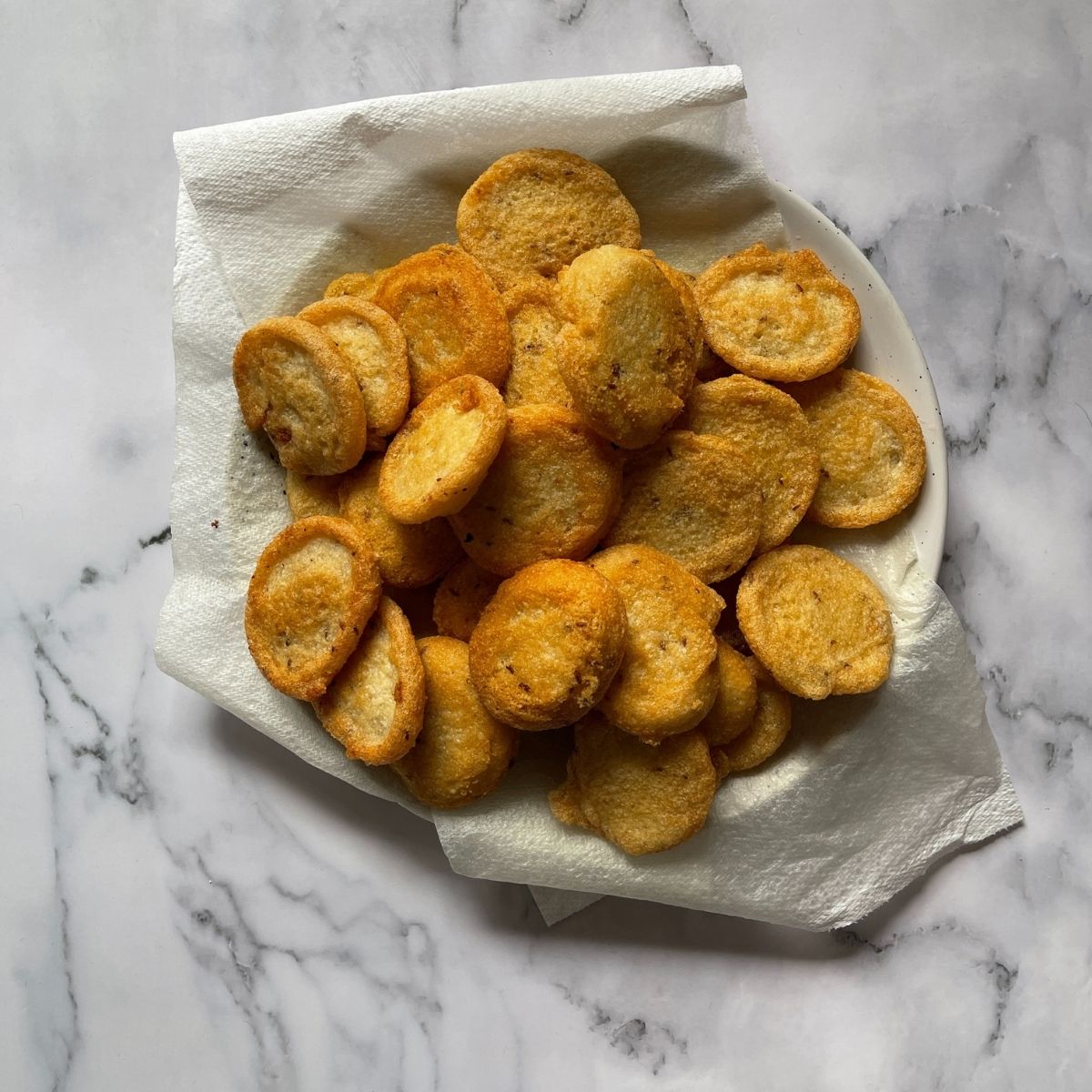
The fried fritters (baray) are light and fluffy on the inside, and crispy on the outside. They can be eaten on their own, and I would always eat (sneak!) a few as my mother would fry them. Once the fritters are fried, they are soaked in hot water till soft. The water is squeezed out, and then they are dunked in yoghurt and topped with spices and chutneys. Normally, dahi baray are served as a complete dish with all the spices and chutneys already added.
However, in my parents’ house all the items are served separately so that everyone can make their own individual bowl. The squeezed out baray would be presented on a serving plate with a bowl of salted and whisked yoghurt placed next to it along with little bowls of salt, red chili powder and roasted and ground cumin seeds (bhuna zeera). Lastly, imli chutney (tamarind chutney), another homemade Ramadan staple. Sometimes my mother would saute chickpeas in cumin seed or boil potatoes and then toss them in red chili powder, coriander and mint chutney and both would be served alongside the dahi baray so we could make our own mix dahi bara chaat.
It’s difficult to explain what chaat is but in India and Pakistan, chaat generally refers to street food style snacks or appetizers. There are many different types of chaat, for instance fruit chaat made with seasonal fruit. There’s chana chaat made with chickpeas, and there’s aloo chaat made with potatoes. What is common across all varieties of chaat is the balance of flavours and textures – there’s spice, there’s tang, there’s a hint of sweetness, and there’s usually a crunchy element for texture. When making dahi bara chaat, the base is dahi baray, which is then topped with spices, and chutneys, followed by potatoes chickpeas for freshness and paapri / fried crisps for crunch.
I would always make a bowl of three dahi baray with lots of roasted and ground cumin seeds (bhuna zeera), and imli chutney (tamarind chutney). Eat one for iftar, and then save the rest to have later in the night as a light dinner.
Since moving to Australia, Ramadan hasn’t been the same as it was back in Pakistan. It’s just two of us in the house – my husband and me – and with the sunset and Iftar times being earlier in the day, mostly we are breaking our fast on our own. There’s no iftar spread like there was in Pakistan. Although the one thing I regularly have on my Australian iftar table is dahi baray. It reminds me of home and the traditions I grew up with and they taste delicious! The yoghurt is refreshing and they make a light yet filling meal which is essential for Iftar when you are eating on an empty stomach. Plus, if you do the prep in advance, they are ready in less than 10 minutes.
How to make dahi baray in 10 minutes?
One of the best things about this recipe is that the baray (lentil fritters) can be frozen. Once you fry the baray / fritters, let them cool, then place them in a Ziplock bag and pop them in the freezer.
Then whenever you need to make dahi baray, take out the required number of baray / fritters and place them in hot water. Let them soak for around 3 – 4 minutes until soft and then squeeze out the water. I use a kettle to boil the water and as the baray are soaking, I whisk the yoghurt and add all the spices. Then I add the soft baray to the yogurt, top with tamarind chutney and enjoy my bowl of dahi baray and the memories of home, childhood and family it brings back.
There is no exact equivalent for ‘Bon Appetit’ in Urdu. I asked a couple of friends and none of us could come up with an exact translation. The closest is probably ‘Bismillah karein’ which I have heard my mother and family elders say. ‘Bismillah’ means ‘In the name of Allah’ and when we say ‘Bismillah karein’ to our guests at let’s say a dinner party, we’re saying ‘Food is served, let’s start eating with a prayer’. A more colloquial phrase would be ‘Khana khul gaya hay’ which translates to ‘food is open’ which you could think of as what’s said when servers open up the covers of chafing dishes – those big stainless steel serving dishes – at a buffet to let everyone know that food is served. The phrase is a bit more casual, and more suited to big events like weddings.
Kiran Afzal
April 2022
Share this story
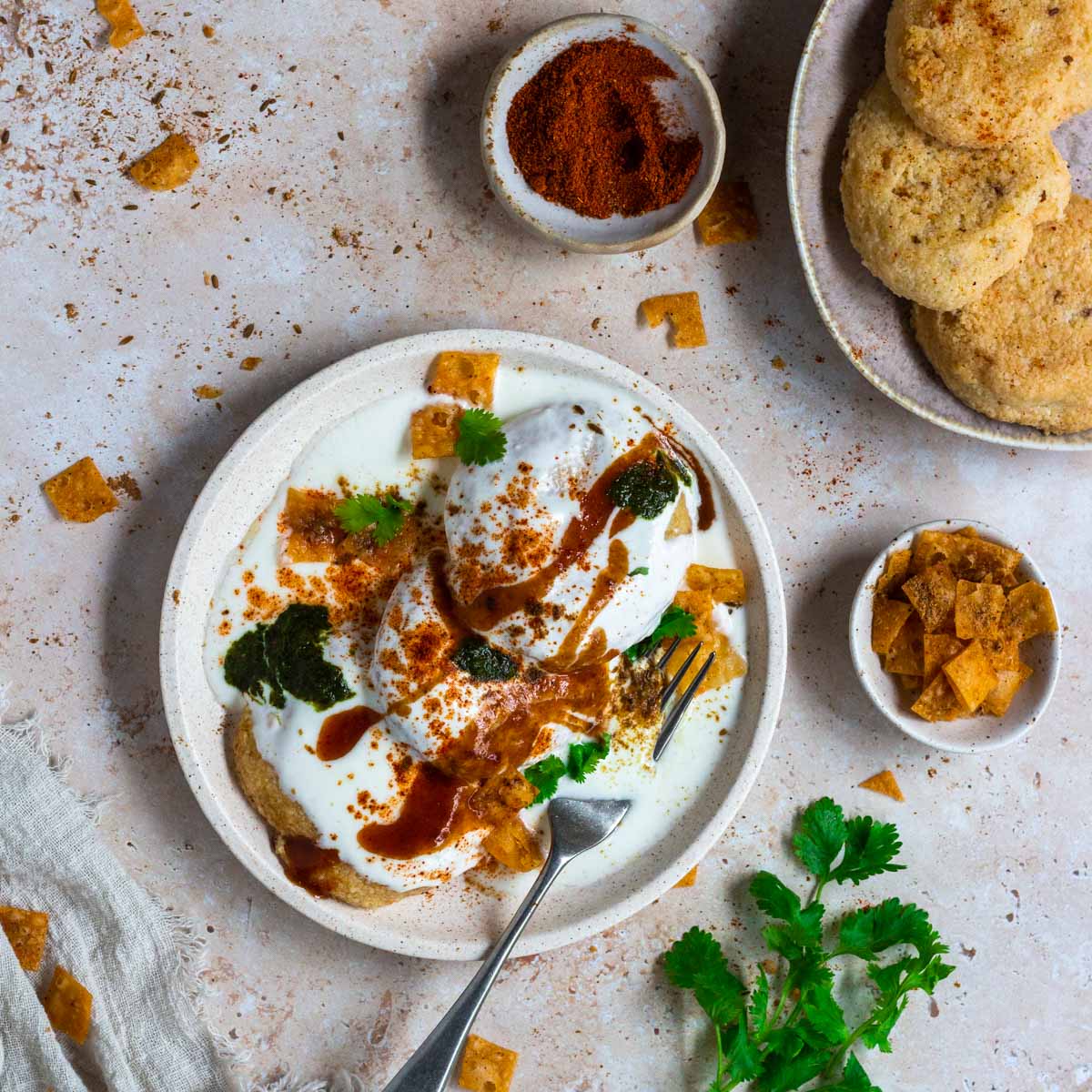
Clean and wash the white lentils (urad daal or mash daal). Soak for at least 6 hours, ideally overnight. If the lentils aren’t soaked enough, they won’t grind properly.
Drain the water and place the white lentils in a food processor. Add salt and cumin seeds. Add water little by little and process till a smooth and thick batter has formed.
Place the ground lentil paste into a large bowl, add baking soda (if using) and mix. Aerate the mixture by using a wire whisk for a couple of minutes, till the mixture almost doubles in quantity. This additional step will make the batter light and fluffy and help make soft dahi baray.
Heat oil in a large frying pan or wok on medium heat. Use a spoon or a cookie dough scoop to drop spoonfuls of the lentil batter into the hot oil. Cook till golden brown on all sides. Once cooked, remove the fried baray from the oil and let drain on a piece of kitchen towel or a strainer. The baray can be cooled, put in a Ziplock bag and kept in the freezer at this stage.
Take a large bowl and fill it with warm water along with a few pinches of asafoetida / hing (optional). Put the fried baray in the water and let them soak for 15 – 30 minutes until they become soft and fluff up. Remove the baray / fritters from the water one by one, gently squeezing them between your palms to remove the excess water.
To make the Yoghurt Mixture:
Add the yoghurt and salt in a bowl. Whisk until smooth and then add water as required to thin the mixture. The yoghurt should be a thick pouring consistency but shouldn’t be super runny. If the yoghurt is on the tangy side, milk can be added to adjust the tartness.
Serving Options
The remaining ingredients (cumin seeds, chilli powder, tamarind chutney, chaat masala, coriander and mint chutney, papri) are used as toppings for the dahi baray.
The first way of serving dahi baray is is the way that I grew up eating it in my family: keeping the dahi baray, yoghurt mixture, and toppings separate so people can add them together to their own taste.
The second way is to present everything together in a large bowl, family style. This method is great when serving for a crowd, or when serving the dahi baray at a party. Add the soaked and squeezed dahi baray to the yoghurt mixture in one serving bowl and top with spices and chutneys.
